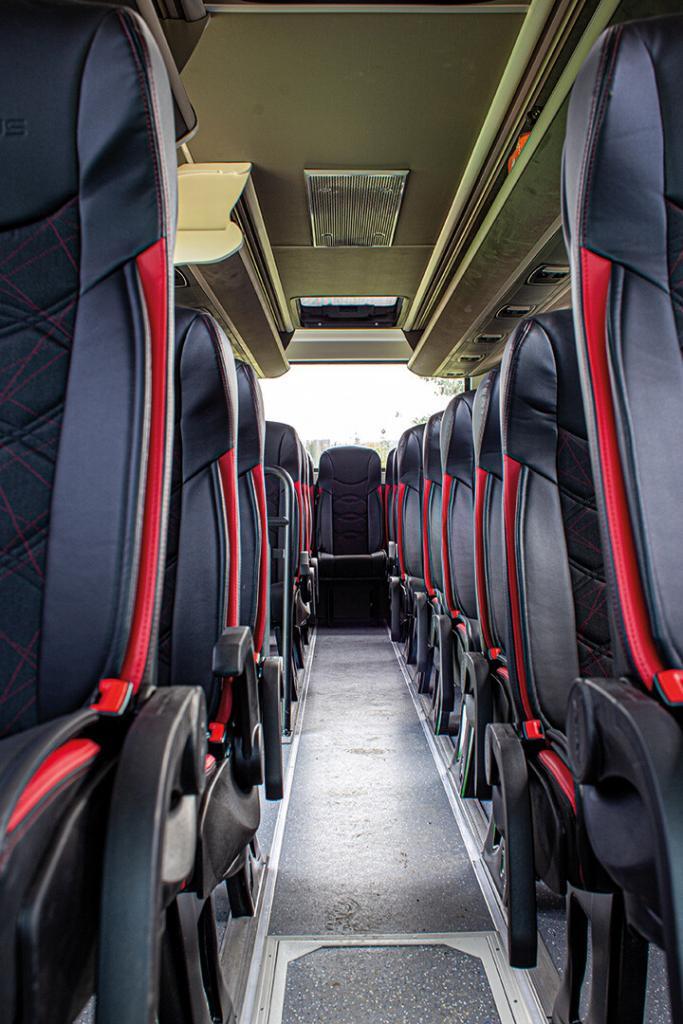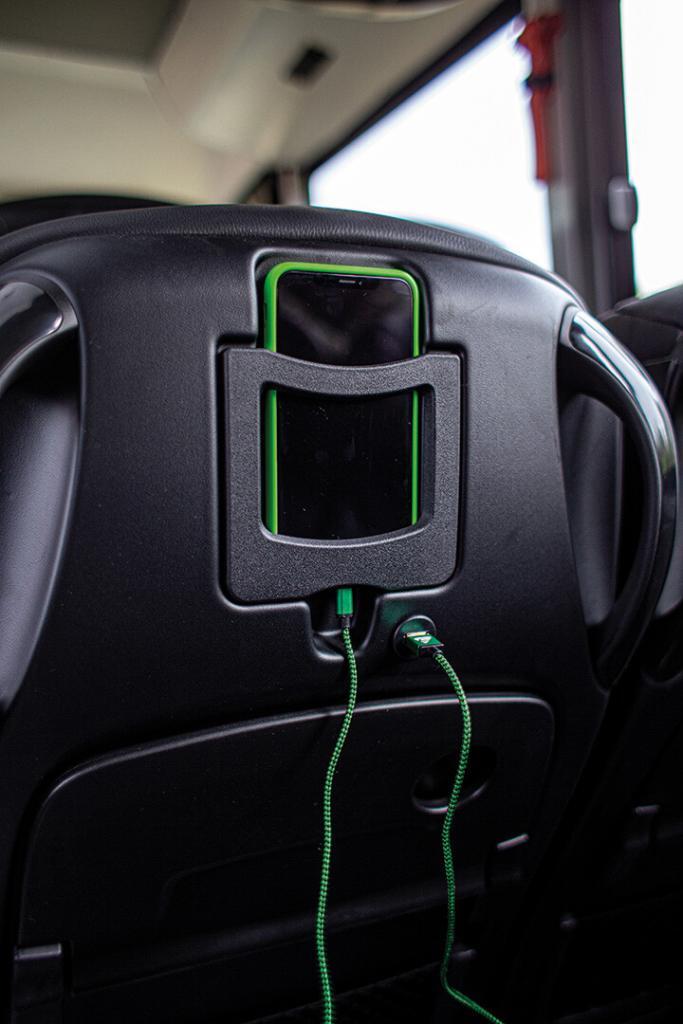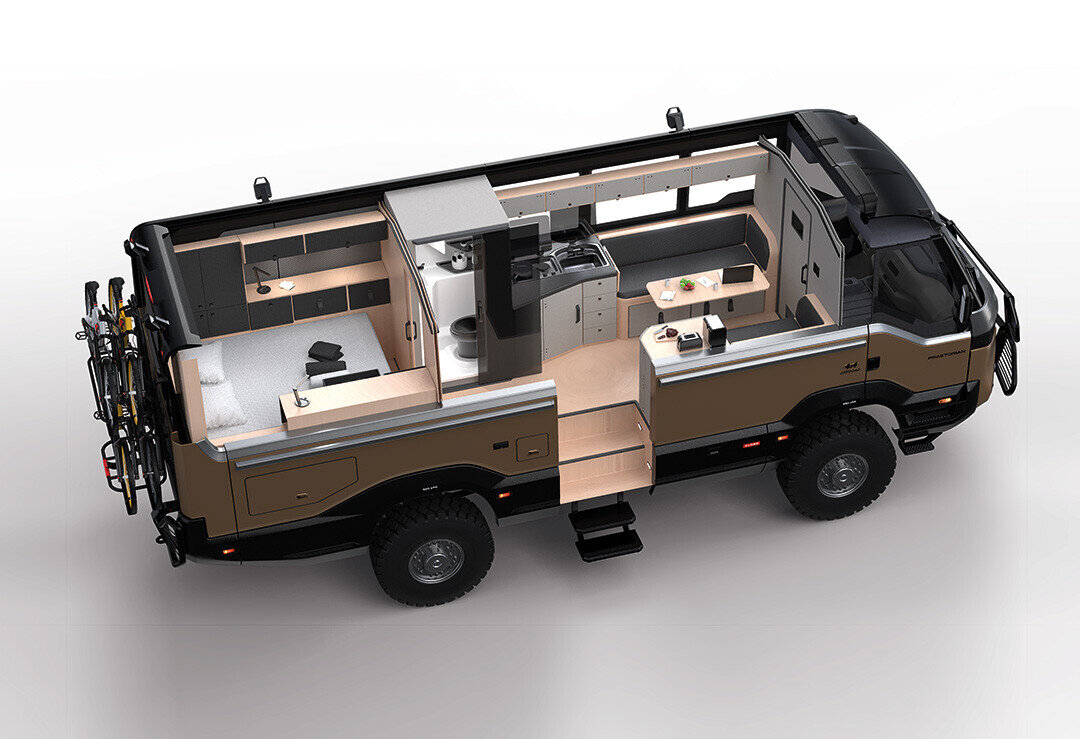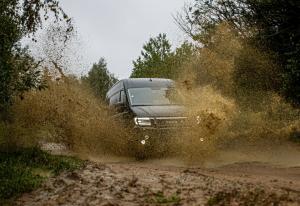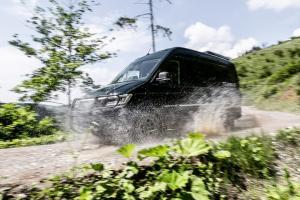In the first instalment of our visit to TORSUS in the Czech Republic, I discussed the Terrastorm—a 5.5 ton van capable of venturing off pavement and currently making a name for itself amongst first responders and recreational vehicle owners. This second instalment is dedicated to Terrastorm’s heavyweight sibling: Praetorian, “the world’s first heavy-duty off-road bus”. In addition to driving the vehicle ourselves, we were accompanied by TORSUS’ CEO and founder, Vakhtang Dzhukashvili, and production
director, Peter Zaiček.
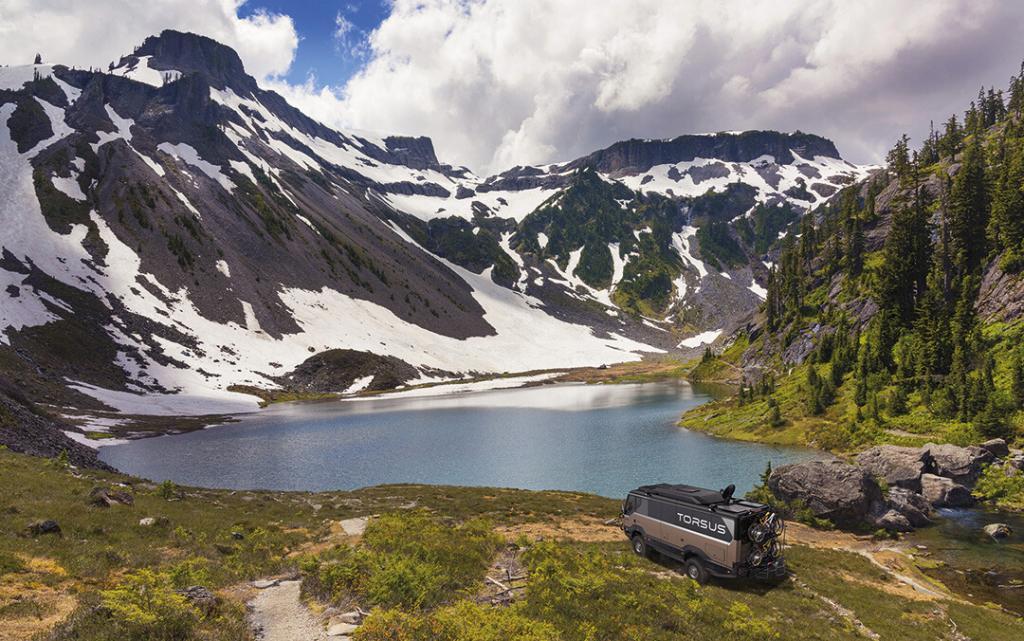
WHAT’S IN THE NAME?
Praetorian, first noted historically during the Roman era, was a title earned by elite soldiers of the Praetorian Guard originally assigned to protect generals during the Roman Republic. The Guard reached its ultimate status when Augustus ascended to the throne as the first Emperor and the regiment became his protector and symbolic for imperial might—a status that would endure for more than 300 years.
Today, the Praetorian represents TORSUS’ flagship product and, similarly to its roman forefathers, its role has evolved: from a heavy-duty off-road bus seating up to 37 passengers designed for the mining
industry to a versatile vehicle attracting customers including the emergency services, military, police, and safari tour operators. There are already 15 specifications to choose from, including the Overlander
and an empty shell.
FROM THE GROUND UP
Standing tall, the rugged lines of the composite bodywork, 395/85 R20 Michelin XZL tyres, respectable ground clearance, and a stance that allows for 32°, 21° and 26° approach, break-over and departure angles respectively, the Praetorian aspires to seeking remote and inhospitable destinations.
Developed with support from MAN, the TGM rolling chassis comes with an admirable pedigree. A brief flick through the annals and the highly capable MAN KAT springs to mind alongside decades of all-wheel-drive vehicles for construction sites, mining, and other tortuous terrain.
Fitted with a 6.9-litre six-cylinder engine producing 290 BHP and 1,150 Nm of torque, customers can choose between a manual, semi-automatic or fully automatic ZF gearbox. The basic vehicle complies with EURO 6 legislation.

TORSUS chose to develop all their vehicles upon one chassis with a 4,200 mm wheelbase. This equates to an overall body length (excluding bull bars) of 8,700 mm, width 2,540 mm and height 3,600 mm (including the air conditioning unit). The vehicle gross weight is 13,400 kg and offers a payload of around 3,500 kg. The composite body has a steel skeleton with integral roll cage and an integrated self-supporting frame which is mounted via torsion reducing elements as effective protection against chassis flex in extreme terrain. The floor is
made from aluminium.
The fully insulated bodywork is fitted with double-glazed and tinted side windows. There are two doors at the front, for the driver and front row passenger, and a single pneumatically operated side door located half way along the body with an automatic retractable step. At the rear is a storage bay with airline rails installed for securing stowed gear.
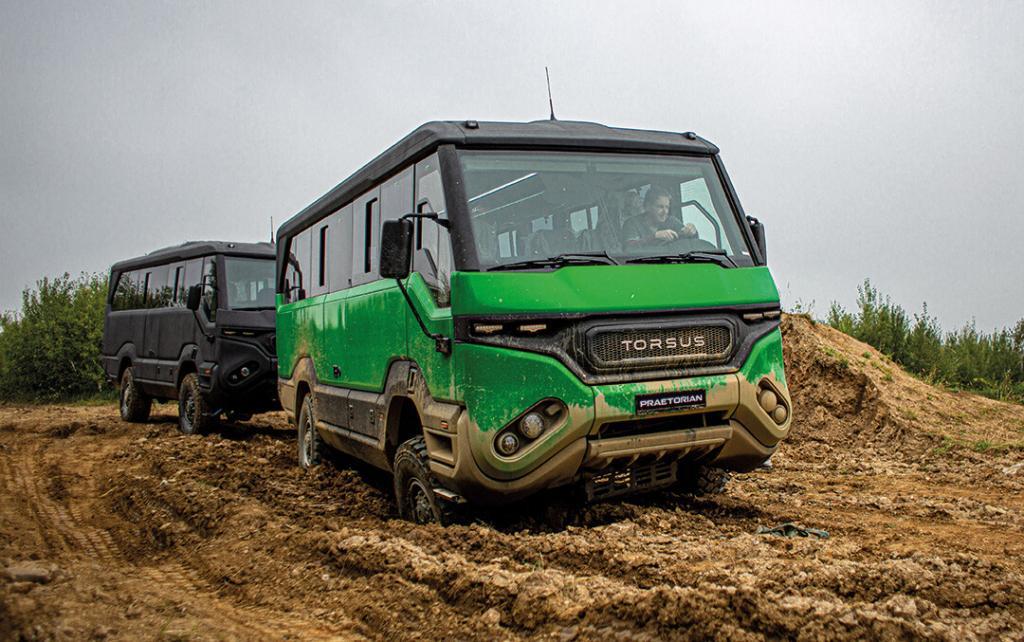
OVERLANDING PREPARED
On the face of it, the Praetorian presents a promising platform for overlanding with several benefits compared to a typical truckbased
expedition vehicle. In a nutshell, the Praetorian has a fully integrated factoryinsulated shell built upon a heavy-duty chassis. With ample Power and torque, a wading depth of 900 mm, low centre of gravity to enable driving at 33.5° angle, and the ability to ascend 65% gradients, this capable vehicle will take even the most enthusiastic overlander to the remotest destinations.
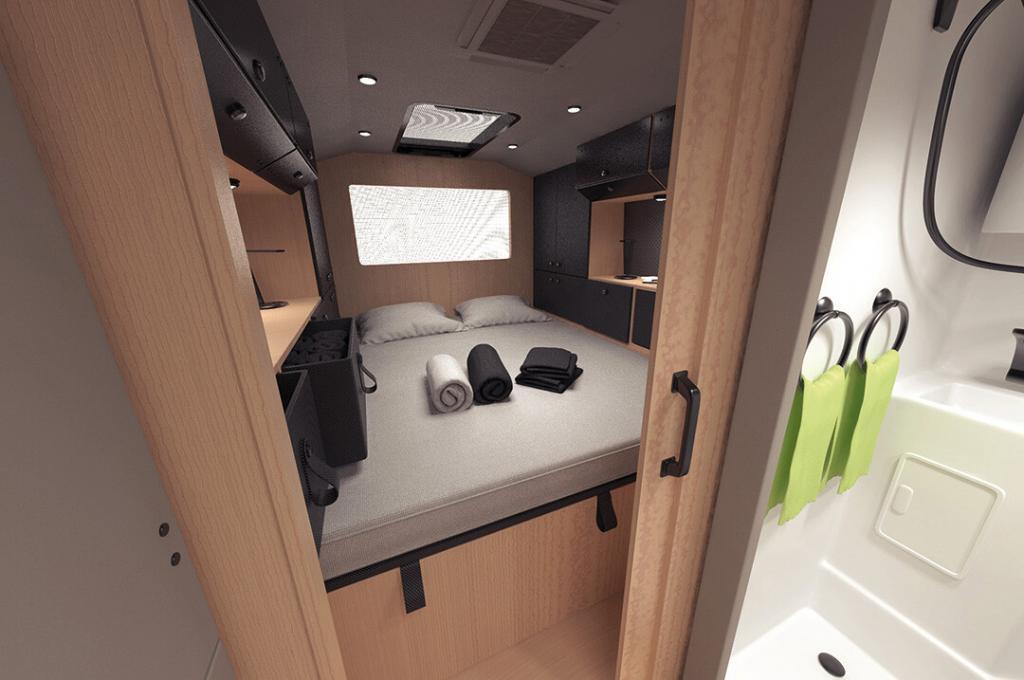
In its standard specification, the chassis is fitted with leaf springs but will also be available with optional air suspension for additional comfort and stability.
With 3,500 kg of payload, a wealth of interior creature comforts can easily be accommodated along with sizeable fresh water tanks. Also, the transportation of sports equipment and/or a motorcycle on an optional rear rack is no cause for concern.
The catalogue depicts a fully prepared overland vehicle complete with awnings, bedroom, bathroom, kitchen, and living quarters. In fairness, this is still a concept design, but considering the basic naked vehicle, the possibilities for an experienced fitter to create a spectacular custom-built mobile domicile for all eventualities are endless.

DRIVING RESULTS
On paper, Praetorian is adorned with plenty of arguments why it should be an ideal heavy-duty off-road vehicle. But how does it fare in real-life scenarios?
Our hosts welcomed us at a testing ground outside of Prague. Thanks to persistent rain during the days prior to our visit, conditions were ideal. The terrain offered cross-axle sections, steep inclines, severe rutting and stretches of deep glutinous mud along with loose sand, gravel and broken concrete.
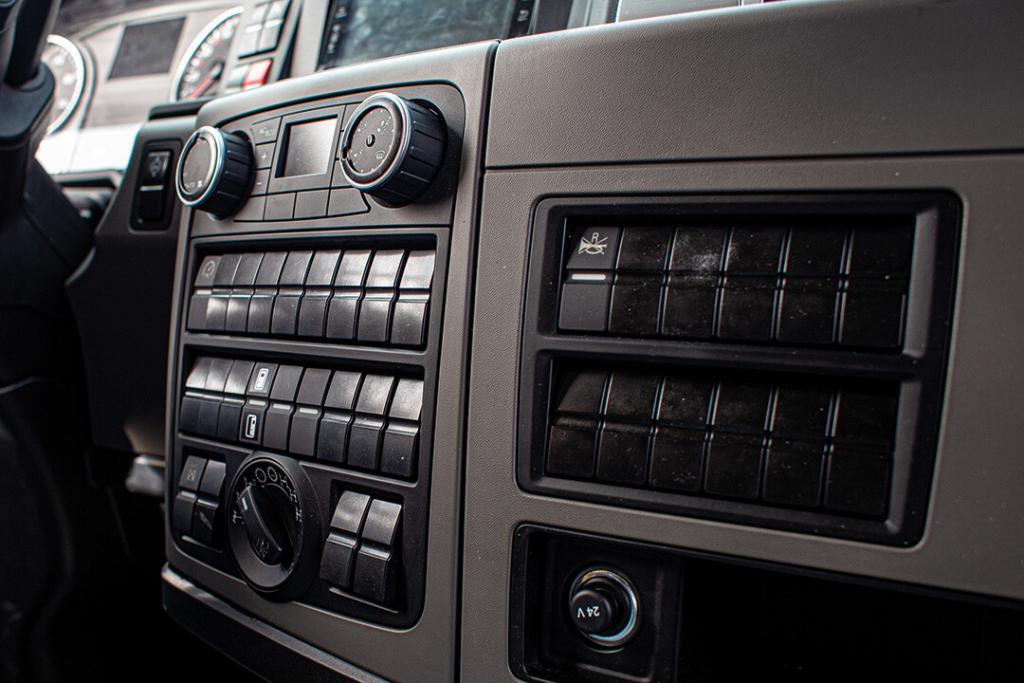
Before venturing off road, the under-run protection at the rear should be disengaged and raised to increase the departure angle. At this point, I should point out that we were testing a customer vehicle fitted with
a manual gearbox and one diff lock, and 37 passenger seats. The spare tyre location beneath the chassis was not ideal and would best be relegated to a rack on the rear.
As far as accessibility is concerned, climbing in and out of the front doors is best left for emergencies or when talking to border control. Entrance and exit is vastly improved via the central door with its large retractable step. Driver comfort is catered for by a pneumatically suspended throne from where overall visibility is good. Dualzone air-conditioning provides separate climate control for the driver and front passenger, and for the rear compartment.
All that’s left now is to activate the rear diff lock and the fun can begin.
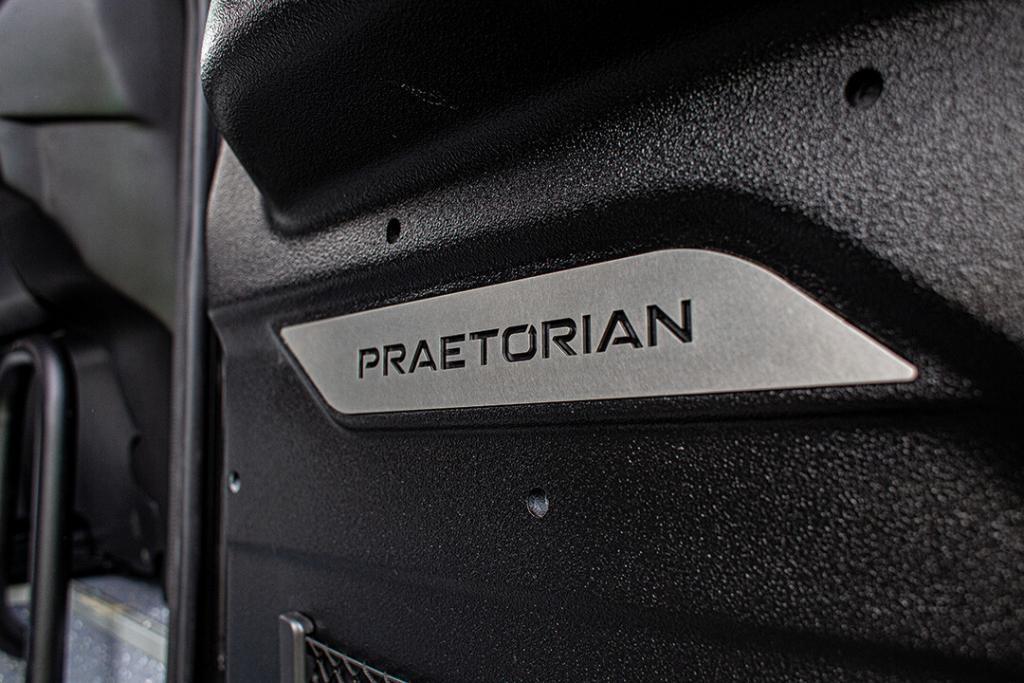
Despite Vakhtang’s and Peter’s enthusiasm for the Praetorian’s performance, Stefan ran through the test procedures in his typically ordered manner. Even though he is still haunted by vivid memories of how a brief lapse of concentration led to several hours of shovel wielding to extract a Unimog from similarly sticky situation, he navigated the matt black Praetorian through the deep sucking mud without missing a beat.
After a full day of driving, the Praetorian remains predictable and sturdy in every terrain. The body mounting responds well and effectively isolates the structure from chassis torsion. The tough protective paint work on the exterior panels did well to fend off branches and scratches.
IN SUMMARY
Praetorian is well-engineered and testimony to the innovative TORSUS team and the MAN special vehicle development division. Everything beneath the cabin floor is built upon MAN’s decades of experience and state-of-the-art engineering to fulfil the latest European legislation. As such, Praetorian can also be purchased through and serviced by any of the official dealers in the MAN international network. The factory warranty applies.
Above the chassis, the composite body is fully insulated against temperatures and noise. The decision to not use steel panels also negates the risk of rust and contributes to durability and longevity.
As an integrated structure originally designed for use as a bus, the empty shell offers an ideal basis for a broad range of applications—including an expedition vehicle. Whether Praetorian can be classed as the ideal overlander is not a simple yes or no question. However, considering the wheelbase, the amount of interior space, its off-road performance and pure versatility, then I think Praetorian is a potential game-changer when compared to the popular track conversions comprising a cab and cabin.
